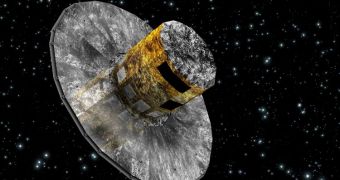An European-wide program seeking to map more than 1 billion stars in 3D has just reached a milestone. On April 26, a powerful data center was opened for business at the University of Cambridge Institute of Astronomy (IoA).
The main purpose of the installation is to provide the processing power required to analyze and catalog the vast volumes of data that will be relayed back to Earth by the European Space Agency's (ESA) Gaia satellite. The mission is currently due to launch in August 2013.
At first, the name Gaia stood for Global Astrometric Interferometer for Astrophysics, but the optical interferometry technique it was to use was eventually changed. The name, however, endured.
The probe is meant to conduct a massive census of the galaxy, mapping billions of stars inside the Milky Way for future reference. It will remain operational for at least 5 years, during which it will survey each of the stars in its field of view about 70 times.
At the same time, Gaia will also focus on the solar system, searching for hundreds of thousands of currently unknown asteroids. These datasets will then be combined with existing ones, kept by NASA, so that experts can gain a better understanding of our cosmic neighborhood.
Processing the huge amount of data that the spacecraft will produce was an important challenge for ESA, one that astronomers at Cambridge believe they can handle via the newly-created data center.
Similar spacecraft produce large amounts of data as well, but Gaia is different through the fact that it will use the largest, most advanced digital camera ever flown to space. The array will have a resolution of about one billion pixels, which will be pieced together from 106 separate electronic detectors.
Gaia is currently the flagship ESA mission of the decade. The precision of its camera will enable the creation of the first 3D map to feature so many stars. The objects' locations will be determined with extreme accuracy, engineers at the space agency say.
“As Gaia slowly spins, it will create a billion-pixel video of the Milky Way, watching everything move, and deducing what is there, and where it is,” Cambridge IoA professor Gerry Gilmore explains.
“On its five-year mission, Gaia will produce a vast amount of information – almost inconceivable in its scope,” adds the expert, who is the principal investigator for UK involvement in the European mission.
The IoA data center features 108 data-processing servers and 9 monitoring, control and backup servers. The former will have two 6-core CPU, 48 gigabytes of RAM and 9-terabyte HDD. The center will therefore have access to 1296 processing cores, some 5 terabytes of RAM and around 1 petabyte of HDD space.
“We installed our major computer processing capability, and now are very busy bring together the huge processing effort which will use this impressive hardware system to turn images into science. We need to be ready for Gaia’s launch, just next year,” says Dr. Floor van Leeuwen.
“After so many years preparation, this is excitingly, but challengingly, soon,” adds the IoA data center project manager. He will also coordinate the 60-scientist consortium that will process photometric data from Gaia.

 14 DAY TRIAL //
14 DAY TRIAL //